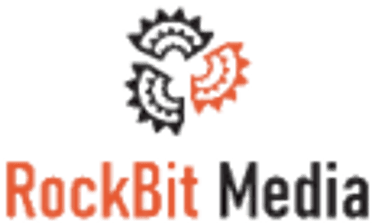Native Advertising
A Comprehensive Guide for Internet Marketers
AFFILIATE METHODS
2/24/20255 min read


What Are Native Ads?
Native advertising is promotional content that matches the form, feel, and function of the platform on which it appears. Unlike traditional display ads that clearly stand apart from a website's content, native ads blend in with the organic content, creating a more seamless user experience. They're designed to look and feel like natural content pieces that belong on the platform, making them less disruptive to the user's browsing experience.
Native ads typically include:
- In-feed ads: Appear within a publisher's normal content, such as Facebook sponsored posts or promoted
tweets
- Paid search ads: Appear at the top of search engine results pages (SERPs)
- Recommendation widgets: "You might also like" or "Recommended for you" content blocks
- Promoted listings: Product listings on e-commerce sites that receive preferred placement
- Branded/sponsored content: Articles or videos created by or in partnership with a brand
- Custom units: Platform-specific native formats designed for particular websites
Implementing Native Ads Effectively
1. Align with Platform Context
The most effective native ads feel like a natural extension of the user experience. They should:
- Match the visual design of the platform
- Adopt the same content format (article, video, image)
- Follow the same tone and style of the surrounding content
- Provide genuine value to the audience
2. Prioritize Quality Content
Successful native ads deliver value through informative, entertaining, or useful content. This requires:
- Understanding audience pain points and interests
- Creating content that addresses those needs
- Weaving your brand message naturally into valuable content
- Using storytelling techniques to engage readers
3. Clear Disclosure
Despite their seamless appearance, ethical native advertising requires transparency:
- Always include clear disclosure labels ("Sponsored," "Promoted," "Advertisement")
- Follow FTC guidelines for advertising disclosures
- Maintain audience trust through honest labeling
- Position disclosures where they're easily noticeable
4. Strategic Distribution
Consider these factors when placing native ads:
- Audience demographic alignment between your brand and the publisher
- Content relevance to the publisher's typical audience
- Traffic quality and engagement metrics of potential platforms
- Mobile optimization (as most native ad consumption happens on mobile)
5. Testing and Optimization
Continuously improve performance by:
- A/B testing headlines, images, and content formats
- Monitoring engagement metrics (time on page, scroll depth)
- Analyzing conversion patterns and optimizing accordingly
- Testing different platforms and placements
Where to Purchase Native Ads
Major Native Ad Networks
1. Taboola: One of the largest content discovery platforms reaching over 1.4 billion people monthly across premium publishers.
2. Outbrain: Similar to Taboola, Outbrain works with premium publishers like CNN, Time, and ESPN.
3. Revcontent: Known for higher-quality traffic but with stricter acceptance requirements for advertisers.
4. MGID: Global network with flexible campaign options and varying minimum spend requirements.
5. Yahoo Gemini: Combines Yahoo's search and native advertising capabilities.
Social Media Platforms
1. Facebook/Instagram: Sponsored posts and in-feed native ads with powerful targeting options.
2. Twitter: Promoted tweets that appear in users' timelines.
3. LinkedIn: Sponsored content for B2B marketing that appears in professional feeds.
4. Pinterest: Promoted pins that blend with organic content.
5. TikTok: In-feed video ads that match the platform's short-form content style.
Content Marketing Platforms
1. Nativo: Specializes in true native formats that match publisher sites exactly.
2. StackAdapt: Programmatic native advertising platform with robust targeting.
3. Sharethrough: Programmatic native platform focusing on engagement metrics.
Search Engine Native Ads
1. Google Ads: Search ads appear at the top of SERPs with only a small "Ad" label.
2. Bing Ads: Similar to Google's offering but on Microsoft's search platform.
Free and Low-Cost Native Ad Options
Content Partnerships
1. Guest posting: Create valuable content for industry publications in exchange for brand mentions or backlinks.
2. Content syndication: Republish your existing content on platforms like Medium, LinkedIn Articles, or industry sites.
3. Native PR: Secure editorial coverage that mentions your brand in relevant publications.
Owned Media Native Approaches
1. Email newsletters: Create sponsored sections within your own newsletters.
2. Community engagement: Participate in relevant forums or communities with valuable contributions (while disclosing your affiliation).
3. Influencer collaborations: Partner with micro-influencers for authentic content in exchange for products/services.
Traffic Sharing and Native Ad Exchanges
Traffic Exchange Networks
1. RevContent Exchange: Publishers can trade traffic with others in the network.
2. Zergnet: Content recommendation widget that facilitates traffic sharing between publishers.
3. Lockerdome: Content discovery platform with traffic exchange options.
Programmatic Native Exchanges
1. TripleLift: Programmatic native ad exchange with real-time bidding.
2. District M: Marketplace connecting publishers and advertisers for native placements.
3. AdYouLike: AI-powered native advertising exchange.
Pros and Cons of Native Advertising
Advantages
1. Higher engagement rates: Native ads typically see CTRs 8-10x higher than traditional display ads.
2. Reduced ad blindness: By blending with content, native ads bypass the "banner blindness" that affects many traditional ad formats.
3. Better user experience: Less disruptive to the user's content consumption flow.
4. Mobile-friendly: Native formats work particularly well on mobile devices where screen space is limited.
5. Bypasses ad blockers: Some native formats may not be filtered by ad-blocking software.
6. Enhanced targeting: Particularly on social platforms, native ads can leverage detailed user data for precision targeting.
7. Brand perception: Well-executed native content can improve brand perception and establish thought leadership.
Disadvantages
1. Higher production costs: Creating quality content requires more resources than standard display ads.
2. Transparency concerns: When poorly labeled, native ads can damage trust with audiences.
3. Difficult to scale: Custom content creation for multiple platforms can be time-consuming.
4. Performance measurement challenges: Attribution can be more complex than with direct response ads.
5. Platform dependence: Format requirements vary widely between platforms, requiring multiple creative
versions.
6. Potential regulatory issues: FTC and other regulatory bodies have strict guidelines about disclosure.
7. Audience skepticism: As consumers become more aware of native ads, some may develop resistance.
Native Ads vs. Alternative Advertising Methods
Native vs. Display Advertising
- Engagement: Native ads typically deliver 2-3x higher engagement rates
- Visual impact: Display ads can deliver stronger brand messaging through visuals
- Intent: Display works better for brand awareness, while native excels at engagement
- Pricing model: Both can operate on CPM, CPC, or CPA models
Native vs. Content Marketing
- Control: Content marketing offers complete control over the environment
- Distribution: Native ads provide immediate access to established audiences
- Longevity: Content marketing assets have longer lifespans
- Investment: Native can deliver quicker results for similar investment
Native vs. Influencer Marketing
- Authenticity: Influencer marketing often perceived as more authentic
- Targeting: Native offers more precise audience targeting capabilities
- Measurement: Native provides more standardized performance metrics
- Content ownership: Brands retain more control over native ad content
Native vs. Search Advertising
- User intent: Search targets active intent, native captures passive interest
- Content depth: Native allows for richer storytelling
- Competition: Search often has higher competition for commercial terms
- Funnel position: Search works better for bottom-funnel, native for top/mid-funnel
Advanced Native Advertising Strategies
Sequential Storytelling. Deploy a series of native ads that tell a progressive brand story, deepening engagement over time. Cross-Platform Native Campaigns. Create cohesive native experiences across multiple platforms, adjusting format while maintaining message consistency.
Native Video Integration. Incorporate video content that matches platform behavior patterns (short-form for social, longer educational content for publisher sites).
Native + Retargeting Combination. Use native ads for initial engagement, then retarget engaged users with more conversion-focused messaging. Data-Driven Personalization. Leverage first-party data to create dynamically personalized native ad experiences that reflect user interests or behaviors. Measuring Native Ad Success
Key Performance Indicators
1. Engagement metrics: Time on content, scroll depth, video completion rates
2. Interaction metrics: Comments, shares, click-through rates
3. Brand metrics: Brand lift, sentiment change, recall
4. Conversion metrics: Lead generation, sign-ups, purchases
5. ROI calculations: Cost per acquisition compared to other channels
Attribution Models
1. View-through attribution: Crediting conversions after ad views without clicks
2. Multi-touch attribution: Assigning value across multiple touchpoints
3. Brand lift studies: Measuring awareness and perception changes
Future Trends in Native Advertising
1. AI-generated native content: Customized at scale through artificial intelligence
2. Interactive native formats: Incorporating polls, quizzes, and interactive elements
3. Native audio ads: Integration with podcasts and streaming platforms
4. AR/VR native experiences: Immersive branded content experiences
5. Hyper-personalization: Using AI to deliver individually relevant native content
6. Stricter regulation: Increasing transparency requirements from regulatory bodies
7. Contextual targeting revival: Less reliance on cookies, more on content context
Conclusion
Native advertising represents a sophisticated approach to digital marketing that bridges the gap between traditional advertising and content marketing. When executed properly, it delivers higher engagement rates while respecting the user experience. While requiring more thoughtful implementation than standard display advertising, native ads reward marketers with better performance metrics and more meaningful customer interactions.
As digital advertising continues to evolve, native formats are likely to remain a cornerstone strategy for brands looking to connect with audiences in non-disruptive ways. The most successful native advertisers will be those who prioritize genuine value, maintain transparent practices, and continuously optimize based on performance data.
